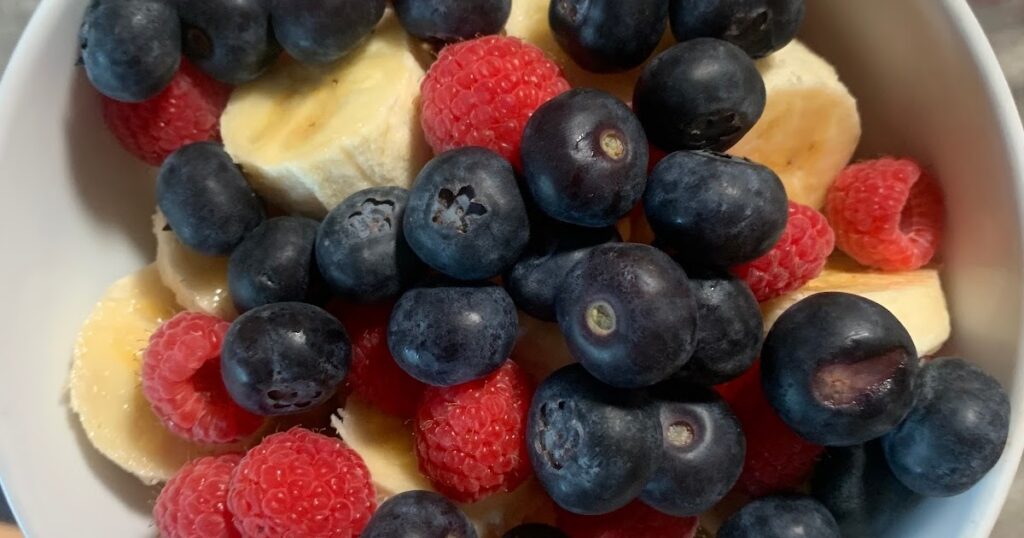
Breakfast fruit.jpg
(This article was originally posted on Forbes on 3/23/23)
Fruits and vegetables are an important part of a healthy diet providing vitamins, minerals, antioxidants, dietary fiber and other benefits. They can also be quite delicious. Nutrition experts agree that many Americans should eat more of these foods, but that can be challenging for those with a busy lifestyle. But another reason is consumers hesitate to buy produce items that they’ve been told are risky because of pesticide residues. The main way they get that idea is through something called the “Dirty Dozen List” which is published each year by the Environmental Working Group (EWGEWG) – an organization which gets funding from several large organic food companies. The 2023 list is expected soon. It purports to advise consumers about which specific foods are most important to buy as Organic to avoid these pesticide residues. This fear-based message is completely misleading and irresponsible.
There are several reasons why this list has a negative effect on society. The first is it represents an egregious misinterpretation of an extensive and transparent public data set called the USDA Pesticide Data Program or PDP. The EWG claims that their list is based on the PDP data, but in fact what the data shows is these foods are safe and “clean” and should be enjoyed with confidence. That conclusion is clearly expressed in the USDA’s public summary and confirmed by the EPA and FDA.
The second issue is the messaging tends to discourage many people from consuming healthy amounts of fruits and vegetables. That is particularly true for those on limited incomes. We do not have a two-tiered food system that requires us to pay a price premium for safety, and the USDA makes it clear that it’s Organic certification is not about safety.
The third reason that the Dirty Dozen List is so corrosive it undermines public confidence in the EPA regulatory process for pesticides as if nothing has changed in the more than 50 years since that agency was established.
The fourth problem is the Dirty Dozen List denigrates the farmers who actually do a great job of producing these crops and protecting them from pest damage and food loss while still complying with the EPA’s requirements for how to do that safely (e.g. what rates can be used and how close to harvest).
What is the PDP and what does it really tell us?
Each year the USDA and its 10 state-level partner agencies go out and collect more than ten thousand food samples from commercial channels within the US food system. For the 2021 study 21 commodities were included (Fresh and frozen Blueberries, Broccoli, Cantaloupe, Cauliflower, Carrots, Celery, Eggplant, Sweet Bell Peppers, Tangerines, Grape Juice, Green Beans, fresh and frozen Peaches, Plums, Green Beans, Watermelon, Summer Squash, Winter Squash, Butter, and Corn for Grain). The samples are taken to the USDA’s national lab or to one of 7 state laboratories throughout the US. There they are prepared the way they would normally be at the household level (washing, peeling etc), and then analyzed using very sensitive technologies that can accurately measure the amounts of more than 300 different pesticides and pesticide metabolites. For 2021 (the 31st year of the PDP) there were 10,127 samples and a total of 27,541 residue detections. For their Dirty Dozen List, the EWG essentially treats all of those detections as equally problematic. To do that truly represents “data abuse.” To understand the actual significance of any given detection one has to consider three details which are quite transparently available through the USDA-PDP dataset download site.
1. What chemical was detected? Individual crop protection chemicals (whether natural or synthetic) differ dramatically in terms of their toxicity profile. Very few modern pesticides are highly toxic to animals or humans. Many work by inhibiting specific enzymes that occur in pests but are not even present in animals. Thus these typically end up being classified by the EPA as category III – “slightly toxic,” or category IV – “essentially non-toxic.”
2. How much of the chemical was present? Since the time of the ancient Greeks is has been understood that “the dose makes the poison.” Modern chemical testing methods can detect extremely small doses – that does not mean that those represent something dangerous or “dirty.”
To begin, 14.4% of the detections were at extremely low levels for which the chemical could be identified and for which there is a defined tolerance, but where there was so little of the chemical present that the amount couldn’t be quantified. These “Trace w/Tolerance” detections are clearly not of concern (see the blue slice in the pie chart above).
For 84% of the detections there was both a quantifiable level of the chemical and a crop/chemical-specific tolerance. In almost all those cases the residue was at a level below the tolerance. These “below tolerance” detections can be further sorted by their “safety margin” (see the four green slices in the pie chart above). For example, if the detected residue was at 1% of the tolerance, it would have a 100-fold safety factor. 16.5% of the samples had a safety margin between 1 and 20. 31.5% had a safety margin between 20 and 100. 31% had a safety margin between 100 and 1000. 4.5% had a safety factor of more than 1,000. These detections simply span the range from safe to extremely safe.
The reason that a separation was made at the 20-fold safety level is because there is a stipulation in the rules for USDA Organic that if claimed organic foods are being tested as part of an enforcement activity, any residue of a synthetic (and therefore unallowed) pesticide below 5% of the EPA tolerance is considered to have been “inadvertent” and would not constitute a violation of the organic rules. That is not based on any different safety standard. Instead the 5% rule is just a practical acknowledgement that there could be low level residues coming from blowing dust or equipment or picking boxes or some other route than having being intentionally treated with the chemical in question. The PDP program is not used as enforcement activity for Organic, but if it were, 82% of all the residues could qualify under that organic exemption.
Only 0.43% of the detections (one in 233) exceeded the relevant tolerance (see the red slice above), and for many commodities there were no detections above tolerance (Cantaloupe, Carrots, Cauliflower, Corn for Grain, Frozen Blueberries, Frozen Peaches, Plums, Grape Juice, Sweet Bell Peppers, Summer Squash, Tangerines, Watermelons).
In 2021, a small subset of the detections were for chemicals without a specific tolerance for the crop in question. Most of those (1.15% of all detections) were below the tolerances for other crops and so they are not of particular concern as they might also have come from some sort of inadvertent, low level exposure. Another 0.3% of detections were cases without a tolerance but only present in the trace detection range that can’t actually be quantified, so they do not represent any significant risk. Only 0.13% of the detections were for chemicals with no tolerance at all and those would need to be considered on a case by case basis to decide if they were actually problematic.
Only 6.35% of the PDP samples in 2021 were labeled as certified Organic items. The analytical methods used by these labs are only designed to detect synthetic chemicals. With the exception of the natural fermentation product Spinosad, the PDP methods can’t detect the most frequently used organic-approved pesticides such as mineral-compounds like copper sulfate and sulfur, microbial products like Bt insecticides or fatty acids. Each such product would require its own specific testing method. Residues of 33 different synthetic chemicals were found among the organic samples and that represents an average of 0.43 detections per sample (vs 2.9/sample for conventional samples). That lower frequency is expected since those chemicals are not supposed to be intentionally applied to an organic crop. Interestingly, the distribution of those residues by category is similar to that for the conventional samples (see graph below)
In conclusion, the largest categories of detections for 2021 were those that are far to very far from anything that could be called “dirty.” In a sense the PDP is a “graded test” of our farmers’ compliance with EPA regulations. They deserve an A+, not an insulting distortion of the truth. If the EWG’s notorious list is published again in 2023, and if it uses its standard, debunked methodology, it should simply be ignored by consumers and either ignored out called out for what it is by the press. Here is another source of good information on this topic.
(Full disclosure: during my 40-year career in agricultural technology I have worked on the discovery and development of crop protection products based on synthetic chemicals, natural products and live biologicals. I have also consulted for numerous companies in that sector. Between 2017 and Q1 2021 I served as a Crop Protection Products Benefits Communicator for the CropLife Foundation – the non-profit arm of CropLife America which is the industry association for the crop protection industry. I performed this year’s data analysis in my semi-retirement, not in any paid industry role).
3. How does the concentration compare to the crop/chemical-specific “tolerance?” Tolerances are residue thresholds established by the EPA as a conservative safety standard. To set this threshold the EPA factors in all that is known about the toxicological profile of each chemical and how the commodity fits into normal diets with special consideration for the diets of children. An additional safety factor is added just to be sure that the tolerance defines a level below which we can be extremely confident that there would be no significant health effects even with frequent consumption. It is inappropriate and irresponsible to classify a residue below or well below the EPA tolerance as “dirty” or dangerous.
Based on the answers to those three questions, one can sort the detections from 2021 into nine categories as shown in two pie charts below.
Source link
2023-03-28 19:21:00
Originally posted 2024-06-13 06:28:01.
Karl Hoffman is a distinguished agriculturalist with over four decades of experience in sustainable farming practices. He holds a Ph.D. in Agronomy from Cornell University and has made significant contributions as a professor at Iowa State University. Hoffman’s groundbreaking research on integrated pest management and soil health has revolutionized modern agriculture. As a respected farm journalist, his column “Field Notes with Karl Hoffman” and his blog “The Modern Farmer” provide insightful, practical advice to a global audience. Hoffman’s work with the USDA and the United Nations FAO has enhanced food security worldwide. His awards include the USDA’s Distinguished Service Award and the World Food Prize, reflecting his profound impact on agriculture and sustainability.







